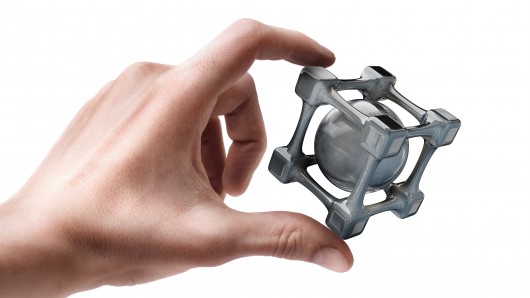
Nanospheres were specifically created to protect the lithium from reacting chemically with the battery electrolyte (Photo: Shutterstock)
Stanford University researchers claim to have created the first stable pure lithium anode in a working battery by using carbon nanospheres as a protective sheath to guard against degradation. As a result, the researchers predict that commercial developments may eventually result in anything up to a tripling of battery life in the not-too-distant future.
At a basic level, a battery is composed of three main elements: the anode (the positive terminal), the cathode (the negative terminal), and the electrolyte (a solid or liquid chemical that stores electrical energy) which fills the battery between these two terminals. In ordinary Lithium-ion batteries, it is an all too common problem that the lithium in the battery can crystallize into dendrites – microscopic fibers that expand into the electrolyte, and can eventually short-circuit the battery, significantly reduce battery life or, worse, causing the battery to catch fire.
However, lithium is also one of the most conductive and efficient metals to use as a battery anode and for many years scientists and other researchers have been trying to find a way to utilize this metal while avoiding the problems inherent in its use. This is where the Stanford team's carbon nanospheres have been put to good use; by coating the lithium so that it does not degrade within the electrolyte, the reserachers claim to be able to use lithium as a battery anode for the very first time.
"Lithium has major challenges that have made its use in anodes difficult," said Guangyuan Zheng, a doctoral candidate in Stanford's Materials and Engineering lab. "Many engineers had given up the search, but we found a way to protect the lithium from the problems that have plagued it for so long."
Using a pliable, uniform, inert film of amorphous carbon nanospheres specifically created to protect the lithium from reacting chemically with the battery electrolyte (that was strong enough and adequately flexible during charging cycles) was the most challenging aspect for the research team. The resulting layer of carbon nanospheres is just 20 nanometers thick; 5,000 layers of which – if laid one on top of the other – would be just sufficient to equal the width of a single human hair.
As a consequence of their research, the Stanford researchers expect that battery technology will get a boost in terms of power, capacity, and longevity.
"Of all the materials that one might use in an anode, lithium has the greatest potential," said Yi Cui, a professor of Material Science and Engineering and leader of the research team. "Some call it the Holy Grail. It is very lightweight and it has the highest energy density. You get more power per volume and weight, leading to lighter, smaller batteries with more power."
In the short term, however, some work remains to be done. For example, the team has managed to achieve a Coulombic efficiency (the efficacy with which an electron flow or charge is transferred in an electrochemical reaction) of approximately 99 percent after 150 cycles. For a battery to be useful and usable in the real world, it must have a Coulombic efficiency of 99.9 percent or better so, even though the new research shows great promise, it must reach the highest efficiency levels to be a success.
"With some additional engineering and new electrolytes, we believe we can realize a practical and stable lithium metal anode that could power the next generation of rechargeable batteries," said professor Cui.
A paper detailing the Stanford University work was published this month in the journal Nature Nanotechnology.
Source: Yi Cui Group
Copyright © gizmag 2003 - 2014 To subscribe or visit go to: http://www.gizmag.com
http://www.gizmag.com/stable-lithium-anode-boost-battery-efficiency/33128